Flumes are specially designed static structures or fittings that restrict the flow of fluid by narrowing the available passage area within a system. These simple components measure and monitor the flow of fluid in free-flowing conditions. The flume can accelerate flow rate through changes in its elevation, the shape of the floor, and the narrowing of system sidewalls, which can transform a subcritical flow of fluid to a critical or even supercritical flow that operators can easily measure. With a variety of standard and custom flume types available, industries can choose the type that best fits their application.
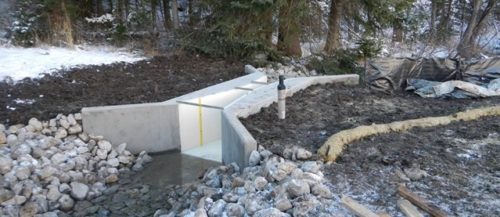
Advantages of Fiberglass Flumes
Selecting the right flume for an application’s environment, flow rate, and channel type allow that application to capitalize on the key benefits of using flow measurement flumes. These include:
- Control over fluid flow rate with high- and low-rate capabilities
- Versatility, as they come in various sizes and shapes
- Less head loss and easier debris passage in the stream of fluid compared to weirs
- Accuracy in making flow predictions
- Few maintenance requirements due to self-cleaning
- Easy installation with a compact footprint
- Readily available, including installation components
Fiberglass flumes give the flume more structural integrity and easy maintenance characteristics across diverse operating conditions and fluid types. The resin and glass fiber construction gives fiberglass some unique advantages for flume composition, including the versatility and malleability of the material. Fiberglass flumes also come in a wide range of shapes and colors for different operations. Properties of fiberglass that make it an excellent choice for flumes include:
- Mechanical strength, despite its lightweight
- Cost-effectiveness
- Resistance to corrosion from chlorine and other chemicals or contaminants
- Thermal, electrical, flame, pest, and microbe resistance
- Ability to resist UV radiation damage with a gel coating
Flume vs. Weir
Both flumes and weirs control the open channel flow of fluid through a designated pathway. However, the way in which they guide and manage fluid flow is very different. Fluid passes through a flume, and fluid passes over the top of a weir. That dissimilarity in weir construction can introduce inertia in the fluid, reducing its head to approximately a quarter of that retained by a flume installation. Weirs have a dam plate that allows liquid pooling and results in lost force, as well as more frequent maintenance. Flumes, on the other hand, guide fluid and increase the force of its flow without significant head loss or lost potential. Flumes offer a better solution for moving fluid through a flat or low-gradient system of channels and ditches.
Flume Instrumentation Accessories
With the help of various flume instrumentation accessories, you can monitor and measure flow rate, water pressure and depth, and more.
Staff Gauge
These gauges, or rulers, come in a wide array of sizes, based on the scale of their installation location on a wall. There are also several types of staff gauges available on the market to fit your application.
Ultrasonic Transducer
Ultrasonic transducers are sensors that produce a pulse of sound to gauge the water level of a flow. Once the pulse reaches the water’s surface, it will rebound back to the transducer, which is installed above a flume’s inlet. The sensor then measures the amount of time between the pulse generation and its return to make its calculations.
Pressure Transducer
These transducers monitor water pressure to determine flow rate within a channel. Rather than installing them above the water’s surface, these transducers are submerged and mounted to the base of a channel. A probe on the pressure transducer compares the water pressure to the proportional flow depth to arrive at a rate-of-flow measurement.
Bubbler Sensor
Like a pressure transducer, a bubbler utilizes a sensor component. In this case, however, it is a tube rather than the sensor that is placed beneath the water in a channel. The tube is connected to the bubbler sensor, and the sensor determines water pressure by measuring the air pressure within the tube at the base of the channel. From this information, the sensor can generate water depth data.
Mag Meter
Mag meters, otherwise known as electromagnetic flow meters, consist of two vital components: a sensor and a transmitter. These parts coordinate to calculate water flow and pass that information on to a control system. The inline sensor monitors the amount of voltage that the water flow creates in piping, logs it, and the transmitter translates that voltage data into a water flow value for the system.
Contact Virtual Polymer Compounds, LLC for Premium Fiberglass Flumes
At VPC Fiberglass, we specialize in creating durable and cost-effective specialty fiberglass components and structures for commercial, industrial, and municipal water and wastewater applications. Our company designs and fabricates custom or standard Parshall flumes, H flumes, Palmer-Bowlus flumes, and trapezoidal flumes through state-of-the-art technology. We also have restoration and repair capabilities to provide our customers with comprehensive service.
Our team will collaborate with you from conception through component installation to ensure satisfaction. Browse our catalog for more information on our product line, or you can contact us today to learn more about our capabilities. Once you are ready to begin your project, request a quote to hear from our team.


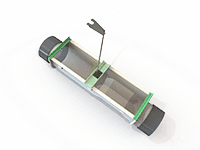
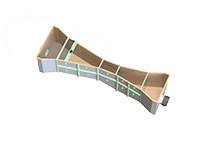
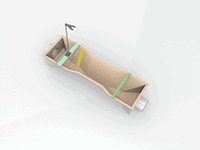
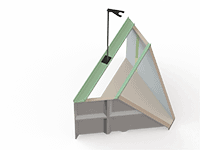

Comments are closed